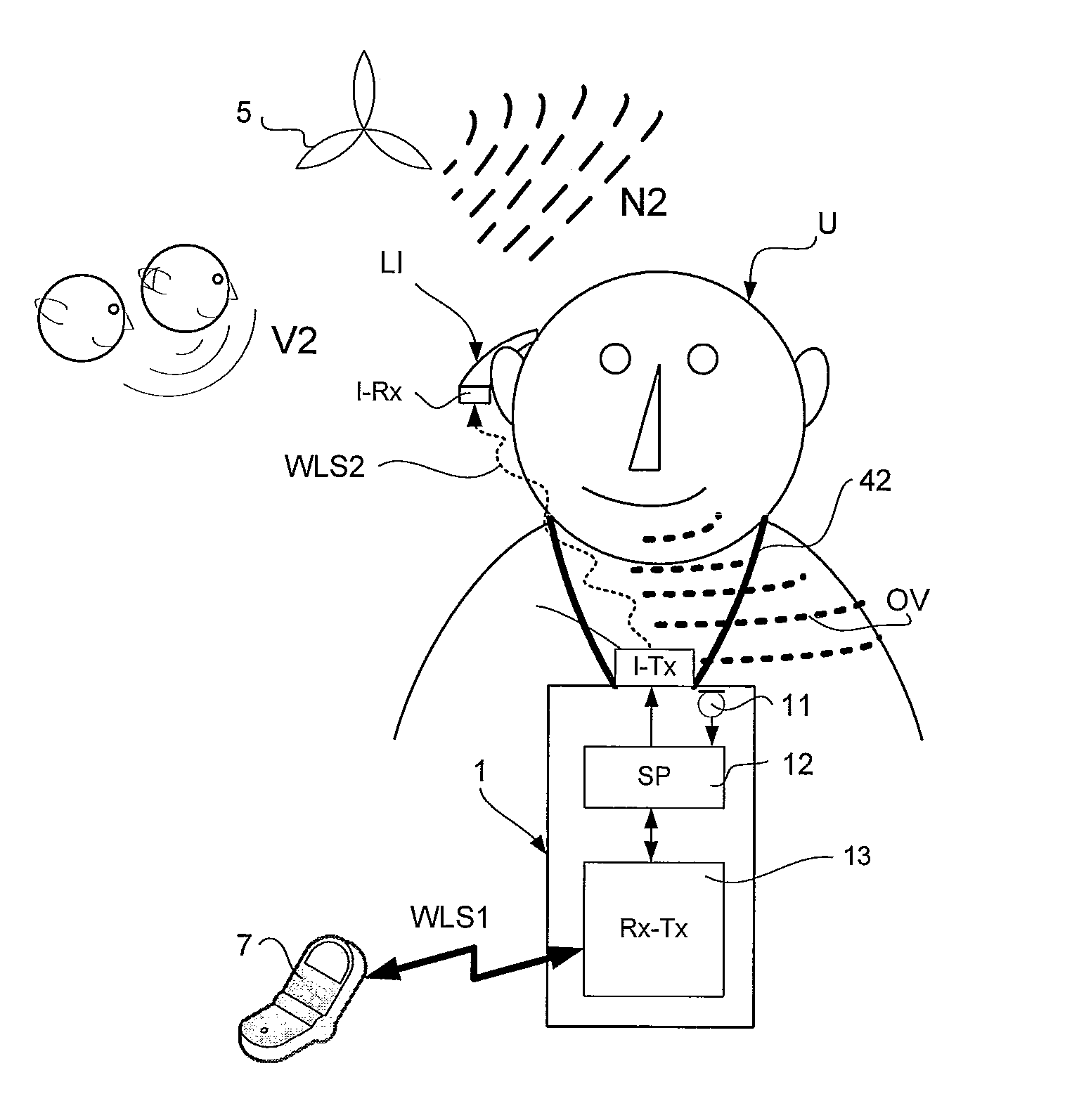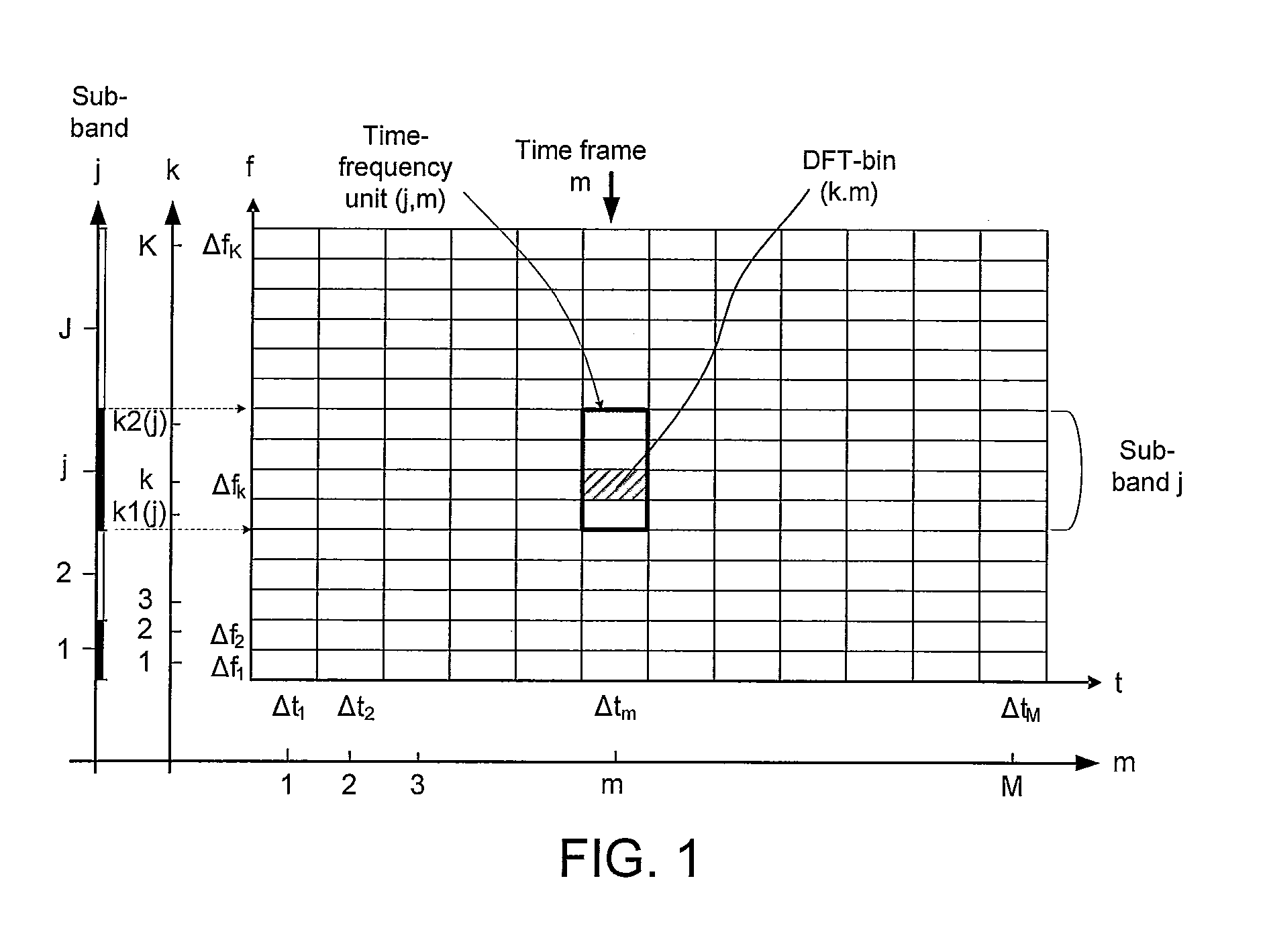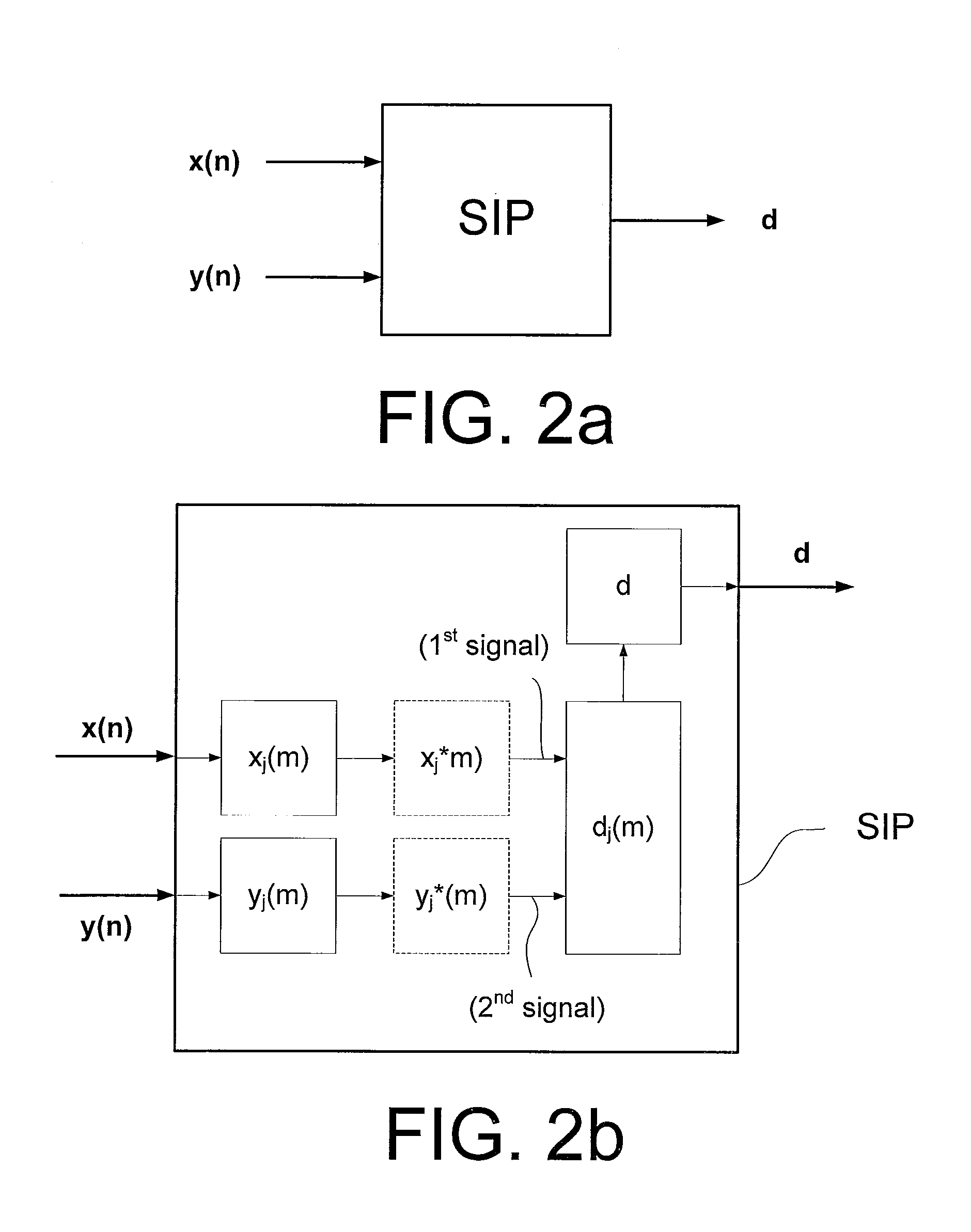Speech intelligibility predictor and applications thereof
a speech intelligibility and predictor technology, applied in the field of speech intelligibility predictor, can solve the problems of less transparency of measures, less appropriate for evaluative purposes, and less appropriate methods
- Summary
- Abstract
- Description
- Claims
- Application Information
AI Technical Summary
Benefits of technology
Problems solved by technology
Method used
Image
Examples
example 1
Online Optimization of Intelligibility Given Noisy Signal(s) Only
[0111]This application is a typical HA application; although we focus here on the HA application, numerous others exist, including e.g. headset or other mobile communication devices. The situation is outlined in the following FIG. 3a. FIG. 3a represents e.g. a commonly occurring situation where a HA user listens to a target speaker in a noisy environment. Consequently, the microphone(s) of the HA pick up the target speech signal contaminated by noise. A noisy signal is picked up by a microphone system (MICS), optionally a directional microphone system (cf. block DIR (opt) in FIG. 3a), converting it to an electric (possibly directional) signal, which is processed to a time frequency representation (cf. T->TF unit in FIG. 3a). The goal is to process the noisy speech signal before it is presented at the user's eardrum such that the intelligibility is improved. Let z(n) denote the noisy signal (NS). We assume in the presen...
example 2
Online Optimization of Intelligibility Given Target and Disturbance Signals in Separation
[0116]The present example applies when target and interference signal(s) are available in separation; although this situation does not arise as often as the one outlined in Example 1, it is still rather general and often arises in the context of mobile communication devices, e.g. mobile telephones, head sets, hearing aids, etc. In the HA context, the situation occurs when the target signal is transmitted wirelessly (e.g. from a mobile phone or a radio or a TV-set) to a HA user, who is exposed to a noisy environment, e.g. driving a car. In this case, the noise from the car engine, tires, passing cars, etc., constitute the interference. The problem is that the target signal presented through the HA loudspeaker is disturbed by the interference from the environment, e.g. due to an open HA fitting, or through the HA vent, leading to a degradation of the target signal-to-interference ratio experienced...
example 2.1
Wireless Microphone to Listening Device (e.g. Teaching Scenario)
[0132]FIG. 5a illustrates a scenario, where a user U wearing a listening instrument LI receives a target speech signal x in the form of a direct electric input via wireless link WLS from a microphone M (the microphone comprising antenna and transmitter circuitry Tx) worn by a speaker S producing sound field V1. A microphone system of the listening instrument picks up a mixed signal comprising sounds present in the local environment of the user U, e.g. (A) a propagated (i.e. a ‘coloured’ and delayed) version V1′ of the sound field V1, (B) voices V2 from additional talkers (symbolized by the two small heads in the top part of FIG. 5a) and (C) sounds N1 from other noise sources, here from nearby traffic (symbolized by the car in lower right part of FIG. 5a). The audio signal of the direct electric input (the target speech signal x) and the mixed acoustic signals of the environment picked up by the listening instrument and ...
PUM
 Login to View More
Login to View More Abstract
Description
Claims
Application Information
 Login to View More
Login to View More - R&D
- Intellectual Property
- Life Sciences
- Materials
- Tech Scout
- Unparalleled Data Quality
- Higher Quality Content
- 60% Fewer Hallucinations
Browse by: Latest US Patents, China's latest patents, Technical Efficacy Thesaurus, Application Domain, Technology Topic, Popular Technical Reports.
© 2025 PatSnap. All rights reserved.Legal|Privacy policy|Modern Slavery Act Transparency Statement|Sitemap|About US| Contact US: help@patsnap.com



